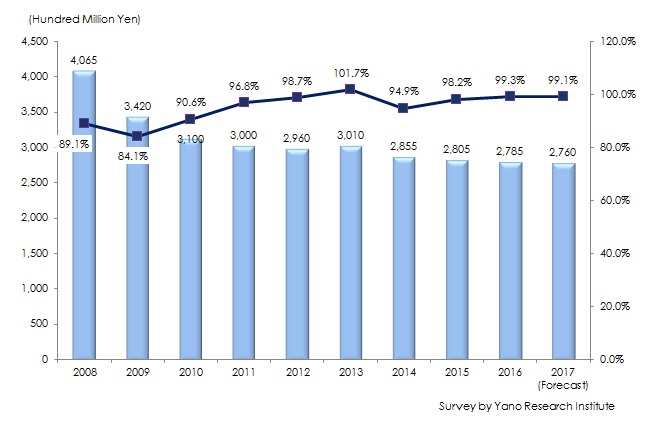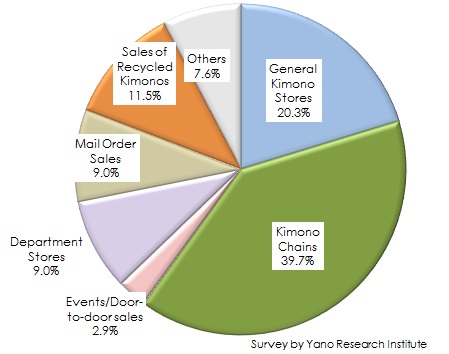Kimono Market in Japan: Key Research Findings 2017
Research Outline
- Research period: From December 2016 to February 2017
- Research targets: Manufacturers, wholesalers, retailers of kimonos and its peripheral goods
- Research methodologies: Face-to-face interviews by the expert researchers, mail–in questionnaire, and literature research
What is the Kimono Market?
The domestic kimono market in this research targets pure-silk kimonos, pongee kimonos, “Obi (a band for kimono)”, recycled kimonos, accessories to wear with kimonos, “Yukata”, and kimonos made with synthetic fiber fabrics. The market size is calculated based on the retail value, and no rental kimonos are included.
Summary of Research Findings
- Domestic Kimono Market in 2016 Declined to 278.5 Billion Yen, 99.3% on Y-o-Y Basis
The domestic kimono retail market size scaled down to 278.5 billion yen in 2016, 99.3% of the size of the preceding year. Although various retailers have made proactive attempts at developing kimonos into new and diverse forms, the sales of formal kimonos have slowed down to bring the entire market into negative growth.
- Favorable Sales in Mail Orders, Recycling, at Events and Door-to-Door
When looking at the kimono retail market by channel, the sales of kimonos through mail orders and recycling systems have been favorable, whereas the sales at events and door-to-door have kept the same level of the previous year. Other than the above channels, however, the sales have not been good. With regard to the sales of kimonos by mail orders, kimono accessories, Yukata, and other kimono related products, together with low-price kimonos are on the rise.
- Rental Demand Expanding due to Foreign Tourists Visiting Japan
The demand of rental kimonos for tourists, though not the target of this research, has been growing due to increasing number of foreign visitors in recent years. Since around 2016, the objectives of such foreign tourists have shifted from just “consuming” to “making experience”, so that experiencing of traditional culture such as Ikebana (the art of flower arrangement), the tea ceremony, and the art of pottery has become popular. In association with such a tendency, the demand of rental kimonos for tourists is projected to expand for the future.
- Figure 1: Transition of Size of Kimono Retail Market

- Figure 2: Composition of Kimono Retail Market by Sales Channel 2016
